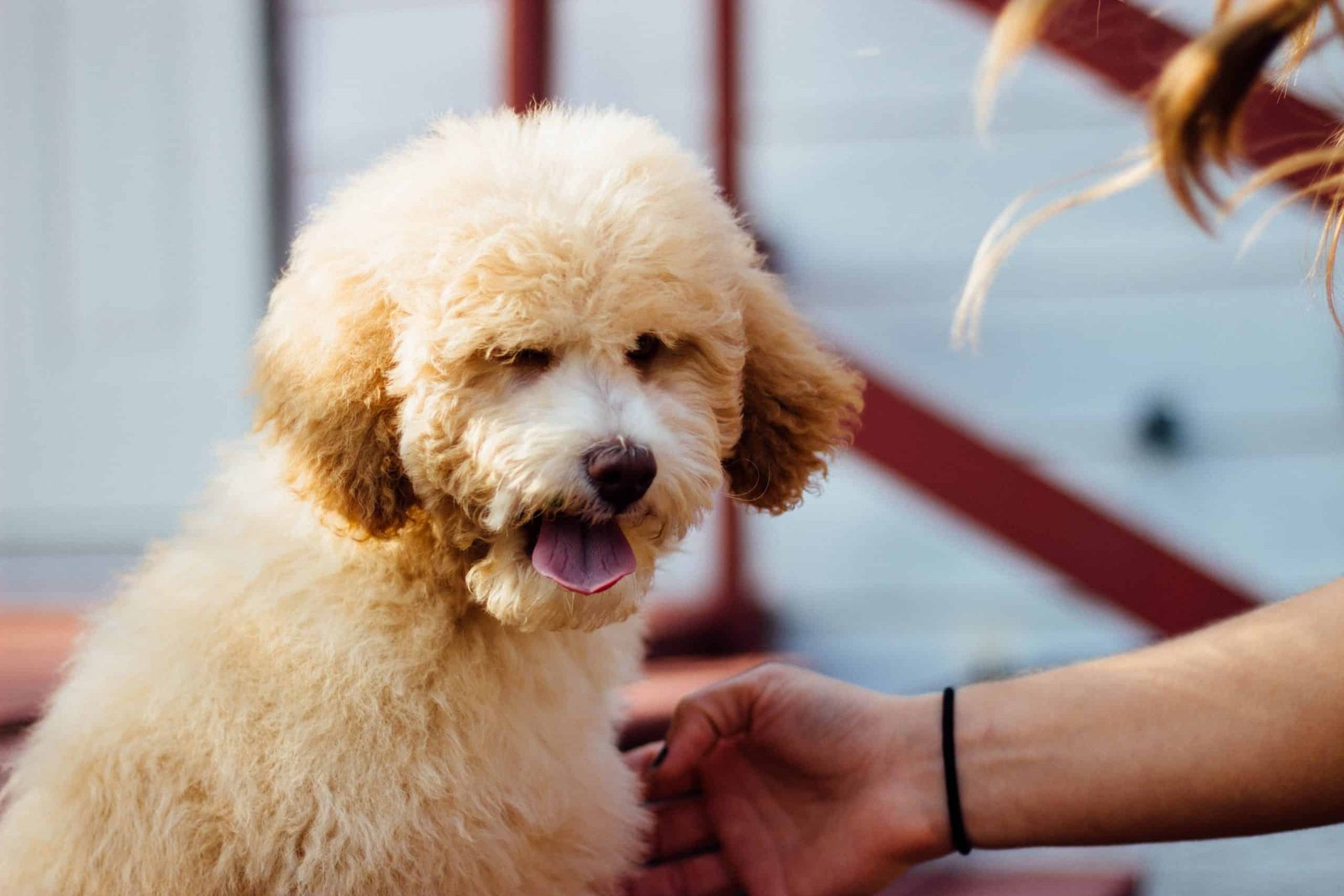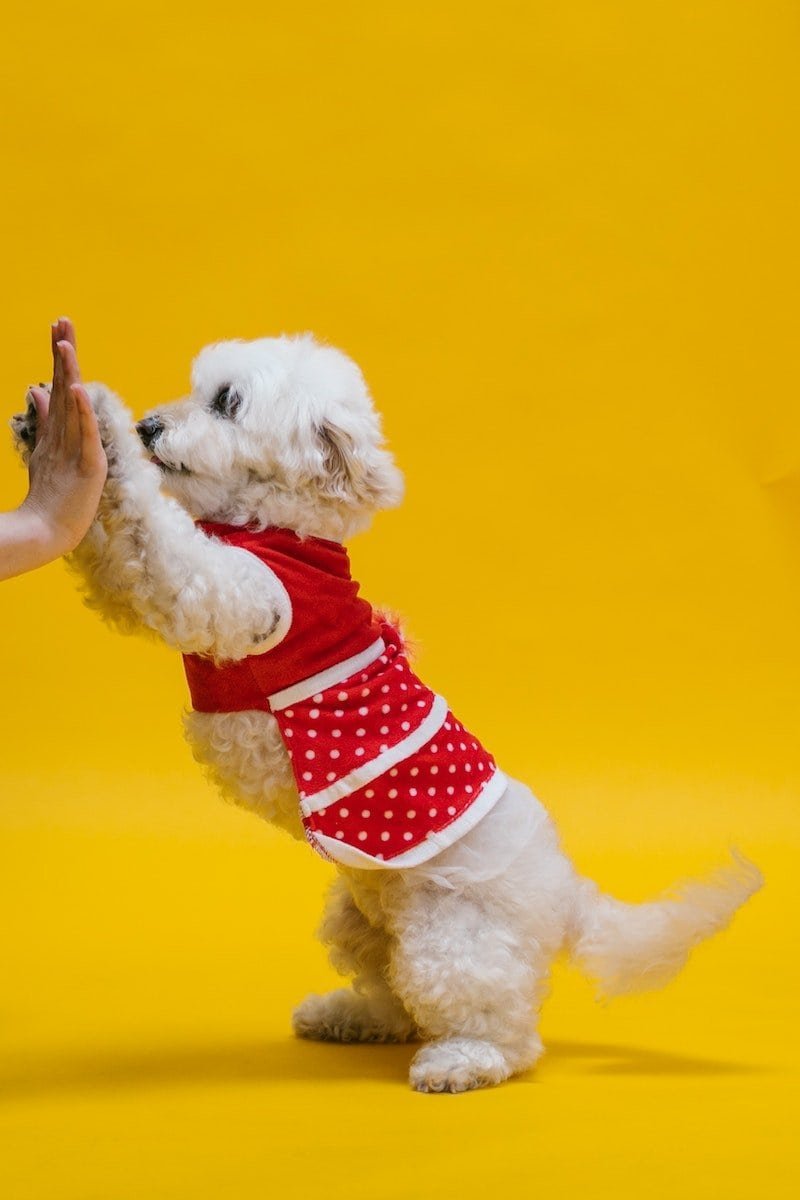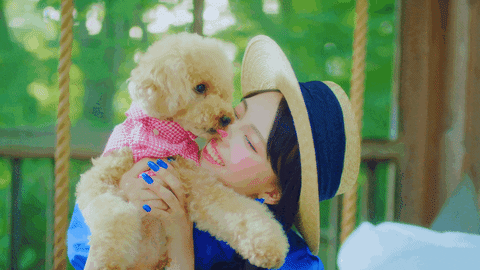Teaching your poodle to come when called is an essential part of their training. Not only does it ensure their safety, but it also strengthens the bond between you and your furry friend. While some dogs may naturally gravitate towards their owners, others require a bit more coaxing. The good news is that with the right approach, you can teach your poodle to come to you every time you call.
To begin, it’s important to understand the poodle breed. Poodles are intelligent, active, and eager to please, making them highly trainable. However, they can also be stubborn and independent, so it’s important to establish yourself as the pack leader early on. Once you have a good understanding of your poodle’s personality, you can move on to the basics of dog training.
Recall training is crucial for all dogs, but especially for poodles. These dogs are known for their high energy levels and love of play, which can sometimes lead them astray. By teaching your poodle to come when called, you can ensure that they stay safe and happy, both at home and out in the world. In the following sections, we’ll explore the best ways to train your poodle to come when called, from preparation and rewards to common mistakes to avoid.
Key Takeaways
- Understanding the poodle breed is crucial for successful recall training.
- Utilizing rewards and positive reinforcement is key to motivating your poodle to come when called.
- Consistency and patience are essential for effective recall training.
From Our Experience: As poodle enthusiasts who have worked with hundreds of poodle owners and rescue organizations over the years, we’ve gathered real-world insights that go beyond textbook knowledge. The information in this article reflects both professional expertise and hands-on experience with poodles of all sizes and temperaments.
Understanding the Poodle Breed
Before you start training your poodle to come when called, it’s important to understand the breed. Poodles come in three sizes: standard, miniature, and toy. The breed originated in Germany and was used as a water retriever. Today, poodles are known for their intelligence, athleticism, and hypoallergenic coat.
Poodles have a unique temperament that sets them apart from other breeds. They are highly intelligent and eager to please, which makes them easy to train. They are also very active and require a lot of exercise to stay healthy and happy. Poodles are also known for their loyalty and affectionate nature, making them great family pets.
When it comes to size, standard poodles can reach up to 24 inches in height and weigh between 45 and 70 pounds. Miniature poodles are between 11 and 15 inches in height and weigh between 15 and 17 pounds. Toy poodles are the smallest, reaching up to 10 inches in height and weighing between 4 and 6 pounds.
It’s important to note that while poodles are generally healthy, they can be prone to certain health issues. Some of the most common health issues in poodles include hip dysplasia, ear infections, and eye problems. Regular vet check-ups and proper grooming can help prevent these issues.
Overall, understanding the poodle breed is crucial to successful training. By knowing the breed’s history, temperament, and physical characteristics, you can tailor your training methods to best suit your poodle’s needs.
Basics of Dog Training
Training your Poodle to come when called is an essential part of dog training. Before you start training, it is important to understand the basics of dog training.
Dog training can be divided into two categories: positive reinforcement and negative reinforcement. Positive reinforcement involves rewarding your dog for good behavior, such as coming when called. Negative reinforcement involves punishing your dog for bad behavior, such as not coming when called.
Positive reinforcement is the most effective way to train your dog. This involves rewarding your dog with treats, praise, and play when they perform a desired behavior. This positive reinforcement will encourage your dog to repeat the behavior in the future.
One common tool used in positive reinforcement training is a verbal cue. A verbal cue is a word or phrase that you use to signal to your dog that you want them to perform a certain behavior. For example, you might use the word “come” to signal to your Poodle that you want them to come to you.
Another tool used in positive reinforcement training is a clicker. A clicker is a small device that makes a clicking sound when pressed. The clicker is used to signal to your dog that they have performed a desired behavior, and that a reward is coming.
Training sessions should be short and frequent. This will help your Poodle to retain what they have learned and prevent them from becoming bored. It is important to be patient and consistent with your training. With time and practice, your Poodle will learn to come when called reliably.
Importance of Recall Training
As a poodle owner, it is important to ensure that your furry friend has reliable recall training. Recall training teaches your poodle to come when called, which is an essential skill for any dog. It can prevent your dog from running into oncoming traffic, escaping from your yard, or getting lost.
A reliable recall command can also help you in emergency situations. If your poodle is ever in danger, you can call them back to you quickly and easily. This could potentially save their life.
Recall training is also crucial for your poodle’s safety. If your dog is off-leash in a public area, it is important that they come back to you when called. This will prevent them from getting into fights with other dogs or bothering other people.
To ensure that your poodle has a reliable recall command, it is important to start training them as early as possible. Consistency is key, so make sure to use the same command every time you call them. Use positive reinforcement, such as treats or praise, to encourage your poodle to come back to you.
In summary, recall training is an essential aspect of owning a poodle. It can prevent dangerous situations, help in emergencies, and ensure your dog’s safety. Start training your poodle today to ensure that they have a reliable recall command.
Preparations for Training
Before you start training your poodle to come when called, it’s important to make some preparations. First, choose an environment with low distractions, such as a fenced yard or a quiet park. This will help your poodle focus on the training and reduce the chances of them getting distracted by other things.
If you don’t have access to a low-distraction environment, consider using a long leash to keep your poodle close to you during training. This will help you maintain control and prevent your poodle from running off.
Another option is to train your poodle in a dog park. While this may seem counterintuitive, it can actually be a great way to teach your poodle to come when called in a high-distraction environment. Just make sure to keep your poodle on a leash until they are reliable with the recall command.
When training your poodle to come when called, it’s important to practice both on-leash and off-leash. Start with on-leash training in a low-distraction environment and gradually increase the distractions as your poodle becomes more reliable. Once your poodle is reliable on-leash, you can start practicing off-leash in a safe, enclosed area.
Finally, it’s important to teach your poodle to come to you when you grab their collar. This can be done by gently grabbing your poodle’s collar and rewarding them with treats and praise. This will help your poodle associate collar grabs with positive experiences and make it easier to catch them if they ever get loose.
Overall, making these preparations before starting training will help set you and your poodle up for success. By choosing the right environment, practicing both on-leash and off-leash training, and teaching your poodle to respond to collar grabs, you’ll be well on your way to teaching your poodle to come when called.
Utilizing Rewards in Training
One of the most effective ways to train your poodle to come when called is through positive reinforcement. This involves rewarding your dog for exhibiting the desired behavior, in this case, coming when called. Rewards can include treats, toys, and praise, and they serve as an incentive for your poodle to repeat the behavior in the future.
When using treats as a reward, it’s important to choose high-value treats that your poodle finds especially appealing. This could be small pieces of cooked chicken, cheese, or any other food that your dog loves. By using high-value treats, you increase the likelihood that your poodle will respond to your call even in distracting environments.
In addition to food rewards, toys can also be effective in training your poodle to come when called. Choose a toy that your poodle enjoys playing with, such as a ball or a squeaky toy, and use it as a reward for coming when called. This can be especially useful for poodles who are highly motivated by play and interaction.
Finally, praise is another important tool in positive reinforcement training. When your poodle comes to you when called, make sure to praise them enthusiastically. Use a happy tone of voice and pet your dog affectionately to let them know they’ve done a good job. Over time, your poodle will learn to associate coming when called with positive experiences and will be more likely to respond to your call in the future.
Remember, consistency is key when using rewards in training. Make sure to reward your poodle every time they come when called, and gradually increase the difficulty of the training by practicing in different environments and with increasing levels of distractions. With patience and persistence, your poodle will learn to come when called reliably and quickly.
Teaching Your Poodle to Come
Teaching your poodle to come when called is an essential command that can keep your furry friend safe in various situations. It is also a great way to bond with your poodle and establish trust.
To start teaching your poodle to come, you will need to choose a recall word such as “come” or “find me.” Once you have selected a recall word, you can start practicing with your poodle.
Begin by calling your poodle’s name followed by the recall word. For example, “Buddy, come!” When your poodle comes to you, reward them with a treat and praise. It is crucial to use positive reinforcement to encourage your poodle to come when called.
Consistency is key when teaching your poodle to come. Practice the recall command in different environments and gradually increase the distance between you and your poodle. Start with a short distance and then gradually increase it as your poodle becomes more comfortable with the command.
When your poodle comes to you, make sure to reward them immediately with a treat and praise. Avoid punishing your poodle if they do not come when called as it can create a negative association with the command. Instead, try to make the recall command a fun and rewarding experience for your poodle.
Another essential aspect of teaching your poodle to come is to work on their “stay” command. A solid stay command can help your poodle stay in one place until you come to them. This command is particularly useful when you need to keep your poodle safe in a potentially dangerous situation.
In summary, teaching your poodle to come when called requires patience, consistency, and positive reinforcement. Start with short distances and gradually increase the distance as your poodle becomes more comfortable with the command. Remember to reward your poodle with treats and praise when they respond to the recall command. With practice, your poodle will soon come when called every time.
Avoiding Common Training Mistakes
When teaching your poodle to come when called, it’s important to avoid common training mistakes. Punishing your poodle for not coming when called is one of the most common mistakes. Punishment can lead to anxiety and fear, making your poodle less likely to come when called. Instead, focus on positive reinforcement techniques, such as rewarding your poodle with treats or praise when they come when called.
Another common mistake is not being consistent with training. Training should be done regularly and consistently, so your poodle knows what to expect. Keep training sessions short and focused, and try to train your poodle in different environments to help them learn to come when called in any situation.
Distractions can also be a problem when training your poodle to come when called. If your poodle is easily distracted, try training in a quiet, distraction-free environment before moving on to more challenging environments. Gradually increase the level of distraction as your poodle becomes more comfortable with the training.
Finally, it’s important to recognize that every poodle is different, and what works for one poodle may not work for another. If you’re having trouble training your poodle to come when called, consider seeking the help of a professional trainer who can provide personalized training advice and guidance.
By avoiding common training mistakes, you can help ensure that your poodle learns to come when called in a positive, effective way.
Ensuring Your Poodle’s Health and Safety
As a responsible pet owner, ensuring the health and safety of your poodle is of utmost importance. Accidents can happen, but there are things you can do to minimize the risks and keep your furry friend safe.
First and foremost, make sure your poodle is up-to-date on all their vaccinations and regular check-ups. This will help prevent illnesses and detect any potential health issues early on. Regular grooming is also essential for maintaining your poodle’s health and hygiene. Brushing your poodle daily can help prevent mats and tangling, while regular nail trimming can prevent overgrowth and discomfort.
It’s also important to keep your poodle safe when they are outside. Make sure your yard is secure and free of any hazards such as sharp objects or toxic plants. When taking your poodle for a walk, always keep them on a leash and supervise them at all times. This will prevent them from running into traffic or getting into dangerous situations.
In addition, it’s important to be prepared for emergencies. Keep a first aid kit handy and know how to perform basic first aid. Learn the signs of common health issues such as heatstroke, poisoning, and seizures. If your poodle exhibits any unusual symptoms, seek veterinary care immediately.
By taking these steps, you can ensure the health and safety of your poodle, and enjoy many happy years together. Remember, accidents can happen, but with proper precautions and care, you can minimize the risks and keep your furry friend safe and healthy.
Additional Tips for Poodle Owners
Teaching your poodle to come when called is an important part of their training. However, there are some additional tips that you can follow to ensure that your poodle is well-behaved and happy.
Be Gentle, Calm, and Quiet: When training your poodle, it is important to be gentle, calm, and quiet. Poodles are sensitive dogs, and they respond best to positive reinforcement. Avoid using harsh methods or yelling, as this can cause your poodle to become anxious or fearful.
Be Firm and Use Clear Language: While it is important to be gentle, you also need to be firm and use clear language when training your poodle. Use a clear and consistent command, such as “come” or “here,” and always use the same tone of voice. This will help your poodle understand what you want them to do.
Make Eye Contact: When calling your poodle, make sure to make eye contact with them. This will help them understand that you are talking to them and that you want them to come to you. It will also help build trust between you and your poodle.
Build Trust: Building trust with your poodle is crucial for successful training. Spend time with your poodle, play with them, and show them love and affection. This will help them feel secure and happy, and they will be more likely to respond to your commands.
Make it a Game: Training your poodle should be fun for both you and your dog. Make it a game by using treats or toys as rewards, and keep training sessions short and positive. This will help your poodle enjoy the training process and be more willing to learn.
By following these additional tips, you can help ensure that your poodle is well-behaved, happy, and responsive to your commands. Remember to be patient and consistent, and always use positive reinforcement.
Frequently Asked Questions
If you’re looking to teach your poodle to come when called, you likely have some questions about the process. Below, we’ve compiled some frequently asked questions about training your poodle to come when called.
How can I train my poodle to come when called?
Training your poodle to come when called takes patience and consistency. One effective method is to start by practicing in a quiet, low-distraction environment, like your home or backyard. Begin by calling your dog’s name and rewarding them with a treat or praise when they come to you. Gradually increase the distance between you and your dog, and continue to reward them for coming when called.
What are some effective methods for teaching a dog to come without using treats?
While using treats can be an effective way to train your poodle to come when called, it’s not the only method. One alternative is to use a favorite toy or game as a reward. Another is to provide verbal praise and affection when your dog comes to you. It’s important to find what motivates your individual dog and use that as a reward.
How can I catch my dog if they won’t come to me?
If your dog won’t come to you, it’s important not to chase them. This can turn the training process into a game for your dog, and make them less likely to come when called in the future. Instead, try to make yourself more interesting by running in the opposite direction, or using a high-pitched, excited tone of voice to encourage your dog to come to you.
What are some tips for calling a dog to come to you?
When calling your dog to come to you, it’s important to use a clear, consistent command, like “come” or “here.” Use a friendly tone of voice, and avoid yelling or sounding angry. Additionally, it’s important to make sure your dog has a positive association with coming to you. This means rewarding them for coming when called, and avoiding using the command in negative situations, like when it’s time to go to the vet.
What are some common mistakes to avoid when teaching a dog to come when called?
One common mistake is to use the command too often, or in situations where your dog is unlikely to come to you. This can lead to your dog ignoring the command when it’s important. Another mistake is to punish your dog for not coming when called. This can make them afraid to come to you in the future.
How can I train my dog to come to me when they are scared or anxious?
If your dog is scared or anxious, it’s important to approach training with patience and care. Start by training in a quiet, low-stress environment, and gradually increase the level of distraction. Use positive reinforcement, like treats or praise, to encourage your dog to come to you. If your dog is particularly anxious, it may be helpful to work with a professional dog trainer.
By following these tips and being patient and consistent, you can train your poodle to come when called and enjoy a stronger bond with your furry friend.






